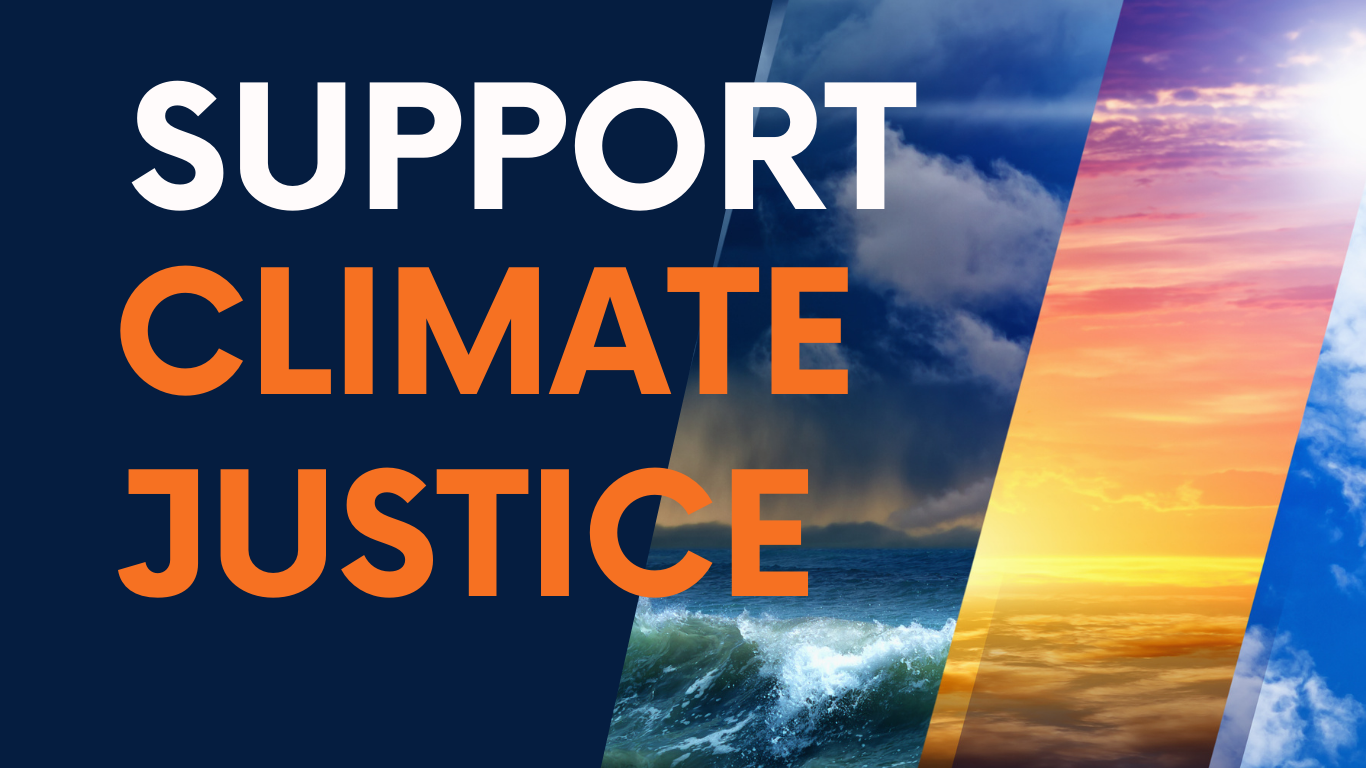In this article we will explore the relationship between economic development and environmental preservation in small island developing States, with a focus on protecting and preserving mangroves in the Caribbean. While economic growth often comes at the expense of fragile ecosystems, Britney Nurse of Trinidad and Tobago and Marco Lopez of Belize delve into the potential of “nature-based solutions,” particularly mangroves, to strike a balance.
Mangroves provide a nature-based solution with great benefits
By Britney Nurse
What comes to mind when someone mentions development at the country level? Do you think of high-rise buildings, well-paved roads, and increased use of technology? Does the concept of economic growth and a high gross domestic product (GDP) pop up? Many people think of development from a strictly economic perspective, and particularly in small island developing states, the desire to boost the economy is often achieved at a cost to the environment.

Tourism is a critical sector in the Caribbean, constituting more than 30% of the GDP of Jamaica and St. Lucia and more than 50% of the GDP of Grenada, St. Kitts and Nevis. This, coupled with the notion that Caribbean countries are “sea, sun, and sand” can result in an overemphasis on coastal infrastructure as developers seek to provide the ocean view that tourists desire. These anthropogenic activities can affect coastal ecosystems and accelerate the effects of climate change, such as sea level rise, which continues to affect Caribbean countries. Sea level rise causes land submergence and loss, enhanced flooding, erosion, salinisation, degradation of coastal ecosystems, and loss of habitat and biodiversity. In Trinidad and Tobago, along its coastal zones, rising sea levels contribute to accelerated coastal erosion and increased coastal flooding. Consequently, coastal resort properties are likely to be flooded, damaged, or destroyed. It then begs the question, “What can small island developing states do to achieve sustainable economic development?”
The term “nature-based solutions” is defined as ‘actions to protect, conserve, restore, sustainably use, and manage natural or modified terrestrial, freshwater, coastal, and marine ecosystems that address social, economic, and environmental challenges effectively and adaptively while simultaneously providing human well-being, ecosystem services, resilience, and biodiversity benefits.’

Examples of nature-based solutions include restoring wetlands to buffer local communities from flood waters or conserving mangrove forests that provide nurseries for fish and protect nearby homes against storm damage. Nature-based solutions are important because they target challenges such as biodiversity loss, climate change, disaster risk reduction, food and water security, and human health. It is estimated that nature-based solutions can provide 37% of the mitigation needed until 2030 to achieve the targets of the Paris Agreement. It has also shown its ability to protect communities and infrastructure from climate change impacts, which makes it an effective adaptation tool.
Nature-based solutions can be effective in combating the adverse effects of rising sea levels, as they can aid in coastal resilience. Natural coastal habitats such as mangroves significantly reduce wave heights (up to 66%) which makes them effective at combating rising sea levels. Mangroves act as natural barriers to protect shorelines from erosion, reduce inland flooding, and lessen the impacts of high winds during storms. Globally, mangroves protect 15 million people from flooding every year and provide over US$65 billion in flood protection services.
In Trinidad and Tobago, mangroves are found on all coasts, particularly the Atlantic and Gulf of Paria sides of Trinidad, as well as in southwest Tobago. Coastal erosion is also an ongoing issue due to both natural forces and human activities, and with floods being the most common natural disaster the country faces, flooding in coastal regions is a major concern. Trinidad and Tobago’s coastal zone includes 70% of the population, 50% of roads and bridges, 80% of energy-based industries, and 3 Ramsar sites.

This makes mangrove conservation, restoration, and protection critical to coastal resilience in the country. Therefore, there should be a greater emphasis on recolonizing restored habitats as well as the active planting of mangrove species that would help with coastal resilience.
Climate adaptation, mitigation, and resilience are not the only reasons nature-based solutions are important. It also provides advantages such as employment opportunities, poverty alleviation, and social and health benefits. In small island developing states, nature-based solutions have been shown to have economic co-benefits in sectors such as tourism and fisheries. This means that nature-based solutions can be utilised in conjunction with eco-tourism to provide economic benefit to small island developing states without compromising the environment.
Unlike many of its Caribbean neighbours, Trinidad and Tobago’s economy does not depend on tourism but rather on oil and natural gas. However, with reduced oil production and the increase in climate change effects, there is a need to diversify its economy. One way to do this is to place more emphasis on ecotourism, specifically through mangrove forests. Among its many benefits, mangrove forests provide habitats for many organisms, support the livelihoods of fisherfolk, help with nutrition security, and allow for recreational opportunities. Mangrove leaves, fruits, and flowers are also used for fodder, honey, medicine, and tea, whereas the wood of many mangrove species can be used in construction, firewood, or charcoal production. Research has also shown that nature-based infrastructure such as mangroves and wetlands provides 25% better value for money than traditional infrastructure. Altogether, mangrove forests provide economic benefit in various ways.
Rahanna Juman, Deputy Director (Ag.) at the Institute of Marine Affairs of Trinidad and Tobago (IMA) noted the economic importance of mangroves to the country. She said, “… the mangrove forests also provide livelihoods for people who harvest and sell fish and shellfish; the most economically important is the harvest and trade of the hairy crab, the blue crab, and the mangrove oyster. Many also earn a living as tour guides, as mangrove forest provide invaluable opportunities for recreation and tourism. They are important tourist destinations because of their aesthetic value and high biodiversity.” The Caroni and Nariva Swamps in Trinidad, as well as the Bon Accord Lagoon in Tobago, are popular eco-tourist experiences. However, these mangroves are being inundated with macro-plastic waste. Seventy-five percent of the garbage collected was plastic, with some entangled in mangrove roots and others buried more than 1 foot deep in the soil. This pollution must be cleaned up, and the cleanliness of the mangroves must be maintained to properly reap both the ecological and economic benefits of the mangroves.

Mangroves can contribute to the development of Trinidad and Tobago without sacrificing environmental preservation. As a nature-based solution, it can protect the country against climate change effects such as sea level rise as well as contribute to the economy, all without further damaging the environment.
Mangrove restoration monitoring supports NBS
By Marco Lopez
This year, at the start of the Caribbean Climate Justice Journalism Fellowship, I interviewed Belize’s Allison Infield for a news piece entitled “Mangrove Mama.” The story focused on Infield’s work restoring mangroves in Caye Caulker, an island hotspot in Belize that has seen drastic ecosystem loss due to big development over the last 20 years.

Infield made a passionate call for more boots on the ground to monitor potential infractions to the laws prohibiting the damage or removal of mangroves. We discovered from the Forestry Department that measurement and monitoring of small-scale mangrove restoration were not conducted by the department due to a lack of resources.

The story was published in early July; by August, the Blue Bond and Finance Permanence Unit released a statement entitled,” BBFPU awards Forest Department with Equipment for Monitoring and Reporting Mangrove Cover and Ongoing Restoration Activities.”
A total of BZ$51,878.00 was donated.

Monitoring restored mangroves was recognized as key to determining success, according to Minerva Gonzalez, an official from the department’s Landscape Restoration Desk.
Climate justice speaks to empowering community members to find solutions to adapt to and mitigate the impact of climate change. Mangrove restoration is an important tool for mitigation and a nature-based solution that provides a plethora of ecosystem benefits when intact and healthy.
As transitional ecosystems, bridging terrestrial and marine environments, mangroves act as key nurseries for small fish, natural storm surge barriers, a water filtration hub, and soil stabilisers to defend against erosion.

Despite this, data from 2019 shows that approximately 12,800 hectares (ha) of mangroves were under protection in Belize—only 16.6% of the total mangroves covered in the country. While any mangrove alterations are guided by strict rules laid out in the Protection of Mangrove Regulations, instances of illegal clearing events in recognized coastal indigenous communities have been cited.
Protecting mangroves aligns with key Sustainable Development Goals (SDG), such as clean water for all. Climate Action, Life Below Water, and Life on Land. In Belize, the Nationally Determined Contribution identifies mangroves as a key component of our forest and a potential source of blue carbon revenue.
The country had committed to protecting 6,000 ha by 2025 and an additional 6,000 ha by 2030. Restoring about 2000 ha of mangrove is also part of the plan; this should include the participation of local communities according to the NDC and be achieved again by 2025, with an additional 2000 ha being restored by 2030.

While these goals seem ambitious, a tourism boom in Belize has put these coastal ecosystems at risk. Many of the new proposals for infrastructure are in coastal marine environments that house biodiversity like mangroves. The economy of a developing small island state like Belize is dependent on the tourism dollar; deep-pocketed investors often circumvent environmental rules.
The argument for increased revenue for the country and its citizens oftentimes buttresses the justification of so-called development, but as Infield notes, ecosystems like mangroves are destroyed and replaced by buildings already developed.

The first comprehensive estimate of total carbon stock in Belize was provided in a study published this year entitled “Belize Blue Carbon: Establishing a National Carbon Stock Estimate for mangrove ecosystems.” The report explained that mangroves alone are “four to five times more effective at sequestering carbon than tropical terrestrial forests.”
The total carbon stock in Belize’s mangroves is approximately 25.7 teragrams of carbon.

Nadia Bood, the Country Representative for the World Wildlife Fund, noted, “If we understand what carbon stock exists within the ecosystem from international carbon credit agencies, we can understand how much you can get in terms of economic generation per hectare.”

Bood added, “Because of the important role of these ecosystems as carbon sinks, it means that Belize can get monetary benefits if it keeps these blue carbon ecosystems intact.”
In conclusion…
The Caribbean’s heavy reliance on tourism and coastal development poses threats to fragile ecosystems, exacerbated by climate change impacts like rising sea levels.
Mangroves are identified as crucial nature-based solutions, providing coastal resilience by reducing wave heights and protecting against erosion, flooding, and storms. Trinidad and Tobago, though primarily reliant on oil and gas, is urged to diversify its economy through ecotourism centered around mangrove forests.
In Belize, challenges of balancing economic growth, particularly driven by tourism, with mangrove conservation exist. Ultimately, the collaborative exploration underscores the integral role of mangroves as both environmental protectors and contributors to sustainable economic development in the Caribbean.
This story is published with the support of the Caribbean Climate Justice Journalism Fellowship, which is a joint venture between Climate Tracker and Open Society Foundations.







